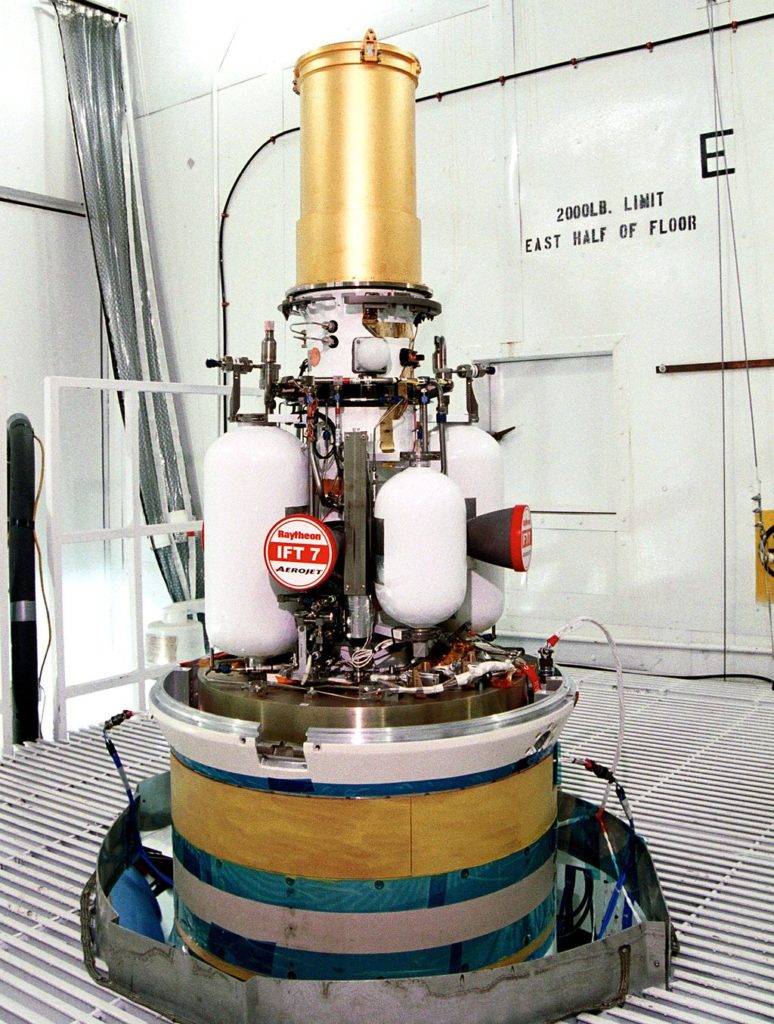A recent government report revealed two problems with the U.S. Ground Based Midcourse (GMD) missile defense system. These flaws, like several problems revealed previously, affect the operation of the “kill vehicle”—the business end of the anti-missile interceptors. The kill vehicle is the part of the system designed to guide itself to collide with and destroy an enemy warhead in space, and is therefore one of the key parts of the whole system.
The report is by the Government Accountability Office (GAO), a federal body set up to dig into matters like this. A Los Angeles Times investigation added further details to the GAO assessment, which it published in an article this past weekend.
What are the flaws in the kill vehicle the GAO discovered?
Some of the wiring in critical electric circuits of the kill vehicles have soldering (the substance used to join wires and other electrical equipment together) joints that are vulnerable to corrosion—which can cause the circuits to malfunction and the kill vehicle to fail. The interceptors and kill vehicles are meant to spend years in underground silos, which may be damp. Silos have in the past been subject to water leaks and “extensive mold contamination” due to substandard construction because of the haste to make the 2004 deployment date. (Sacrificing quality engineering to meet a deadline is a recurring theme for the missile defense system.)
The GAO reports that defective wiring is in all of the ten fielded CE-II kill vehicles, as well as those eight currently being assembled for fielding this year.
The other flaw is an unspecified issue with the divert thrusters—the part of the kill vehicle that allows it to maneuver in flight to hit its target. The Missile Defense Agency (MDA) has reported numerous problems with the divert thruster in the past, but according to the LA Times, this issue is a different one and affects all 33 fielded interceptors as well as the eight in production.
Both problems can keep the kill vehicle from doing its job, and undermine the reliability of the system. According to the MDA, the reliability issue can be offset by launching more interceptors, though the inventory can be quickly exhausted.
Despite these pervasive problems, to keep on schedule the MDA does not plan to fix the thruster and other problems in the currently deployed or soon to be fielded interceptors.
The MDA is also producing another version of the CE-II kill vehicle. (I can’t fault you if you are confused—the GMD “has multiple variants of its interceptor at different stages of development and production as a result of its developmental challenges and flight test failures,” says the GAO.)
This new version, the CE-II Block I, is meant to fix yet another kind of problem, that associated with the Inertial Measurement Unit (IMU), which is part of the guidance system. The IMU problem has been identified as one of the issues in the December 2010 intercept test failure, and the CE-II is intended to incorporate a new version of the divert thruster and make other improvements.
To deal with the current problems, the GAO recommended the reasonable, proven approach: delay the production of these new, upgraded kill vehicles until it has completed at least one successful intercept test with the design. But the GMD history is one of repeatedly fielding untested interceptors, and then retrofitting or redesigning those interceptors after test failures, to great expense and delay. And history is repeating itself again in this case.
In the Pentagon’s comments to the GAO’s report, it stated that it will delay “emplacing” the interceptors (I believe this means putting them in silos) but it will not wait for a successful test before producing them. The reason: delaying the production and integration until a successful flight test is conducted “would unacceptably increase the risk to reaching the Secretary of Defense mandate to achieve 44 emplaced interceptors by the end of 2017.”
I would like to be able to say that this is an extraordinary rationale, but it is quite the opposite for missile defense. Repeatedly, the GMD has sacrificed quality, shortcut engineering cycles, and sidestepped acquisitions best practices to meet an arbitrary deadline.
What’s surprising about the GAO report?
On the one hand, this is not surprising at all. The GAO has been mandated since 2002 to prepare annual assessments of the missile defense program’s progress, from an acquisitions perspective. These reports have repeatedly uncovered serious problems, frequently related to the breakneck pace of development that requires building the interceptors and fielding them before testing. (The G.W. Bush administration mandated in 2002 that an initial deployment be ready in 2004, requiring many engineering and procurement shortcuts.)
On the other hand, it is surprising that these new reports continue to find new problems—which shows that the development and acquisition process is still broken. The procurement shortcuts have not been rethought.
The wiring and divert thruster problems are not isolated issues, but are emblematic of a system rushed into service with a tight deadline and very little oversight.
It’s a good time to revisit this observation from the GAO from over a decade ago, in 2003, that contrasts a “knowledge-based” approach to a “schedule-driven” approach to development:
Because the ballistic missile threat is rapidly increasing, MDA could always believe it is operating in an emergency environment. Yet, it has never been proven that it takes longer to acquire a weapon system if a knowledge-based acquisition plan is followed. Instead, the opposite should be true, because such a plan decreases the likelihood that deadlines will be missed because critical elements do not work as intended.

